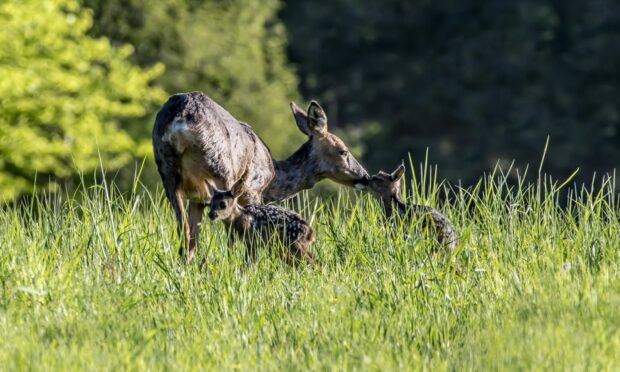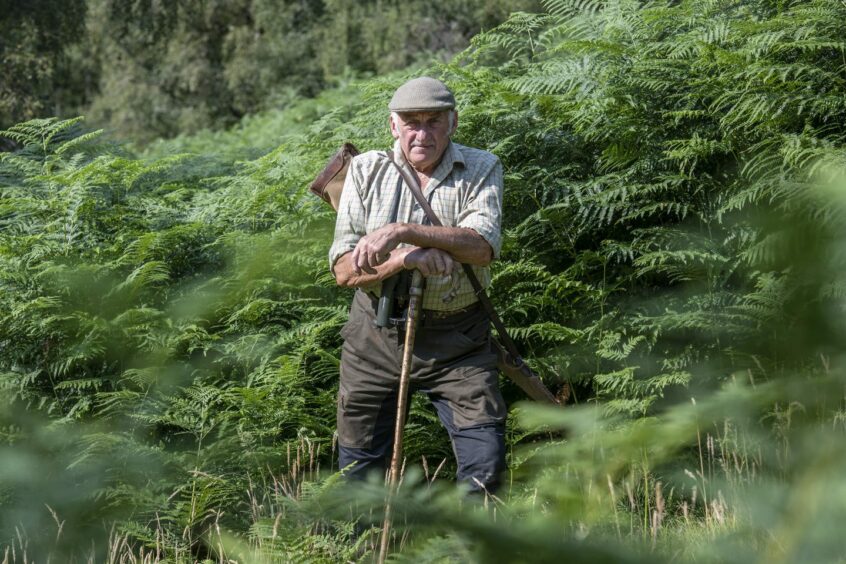Scottish gamekeepers have attacked forestry and wildlife agencies for ordering another out of season deer cull they claim will leave orphan deer.
Peter Fraser is vice chair of the Scottish Gamekeepers Association.
He said Scottish Government agency Forestry and Land Scotland has mismanaged Scotland’s woodland, leading to the latest out of season cull starting on August 31.
Teams normally shoot deer from October 21st to protect hinds with young. Orphaned fawns will usually starve to death.
FLS ordered the same out-of-season cull last year.
Mr Fraser said: “Forest damage is so high in Scotland today because, for years, FLS policy has meant that they have shot the wrong animals at the wrong time.
“There has been no selection and no thought put into creating forests which are designed for deer control.”
‘Young deer will be left, no question’
Mr Fraser is now retired after 43 years as a gamekeeper.
He is a long-term critic of the way government agencies manage deer populations.
In 2012, he published a report into the economic importance of red deer to Scotland’s rural economy.
The cull begins today and has been approved by agency NatureScot. He said it would have serious animal welfare implications.
“I have been managing deer a long time and youngsters will be left, no question,”
“I don’t see the point of this cull when they could wait a few weeks more and get the job done more effectively.”
Forestry and Land Scotland has said the cull comes “in the wake of the recent call from biodiversity minister, Lorna Slater, for a sustainable solution to Scotland’s deer problem.”
Deer populations in most rural parts of Scotland have soared with FLS putting their numbers at now over a million, double the 1990 figure.
Deer cull will protect 150 million young trees
Experts at the agency say that puts 150 million young trees at risk. The body estimates the impact of deer damage on FLS-managed land is estimated at £3million.
Healthy forests are essential as a habitat for many species as well as helping Scotland hit its carbon emissions reduction targets.
Ian Fergusson is FLS’ head of wildlife management.
Announcing the cull on August 24, he said:
“Last month Biodiversity Minister, Lorna Slater, reminded all land managers that in the face of unprecedented deer numbers, action needs to be taken now to reduce the negative impacts of deer if we are to meet our climate change targets.
“As responsible land managers, every year we deliver one third of Scotland’s overall annual deer cull in our bid to protect young trees, areas of forest regeneration and important vulnerable habitats – such as Scotland’s Atlantic rainforest – that are a vital part of Scotland’s response to the climate emergency.”
Deer cull will follow ‘industry best practice’
A NatureScot spokesperson defended the decision to greenlight the cull.
“Deer welfare is key and NatureScot takes into account the period of greatest welfare risk based on the dependency of young, which in Scotland is the period between the 1st April – 31st August.”
She said that period has been identified based on commissioned research into birthing and weaning dates of all species Scotland wide.
Those individuals conducting the cull outside of that period would have been assessed as fit and competent and would be following industry best practice, she added.
A spokesperson for Forestry and Land Scotland said Mr Fraser’s comments were “not unexpected” and FLS had addressed his points previously.
He said: “We are not aware of any evidence ever having been presented to support the assertion that young deer being left to die as a result of our culling operation.”
He said previous culls had been successful at reducing the number of deer on FLS land. But deer had moved from neighbouring estates, necessitating another cull.












Conversation